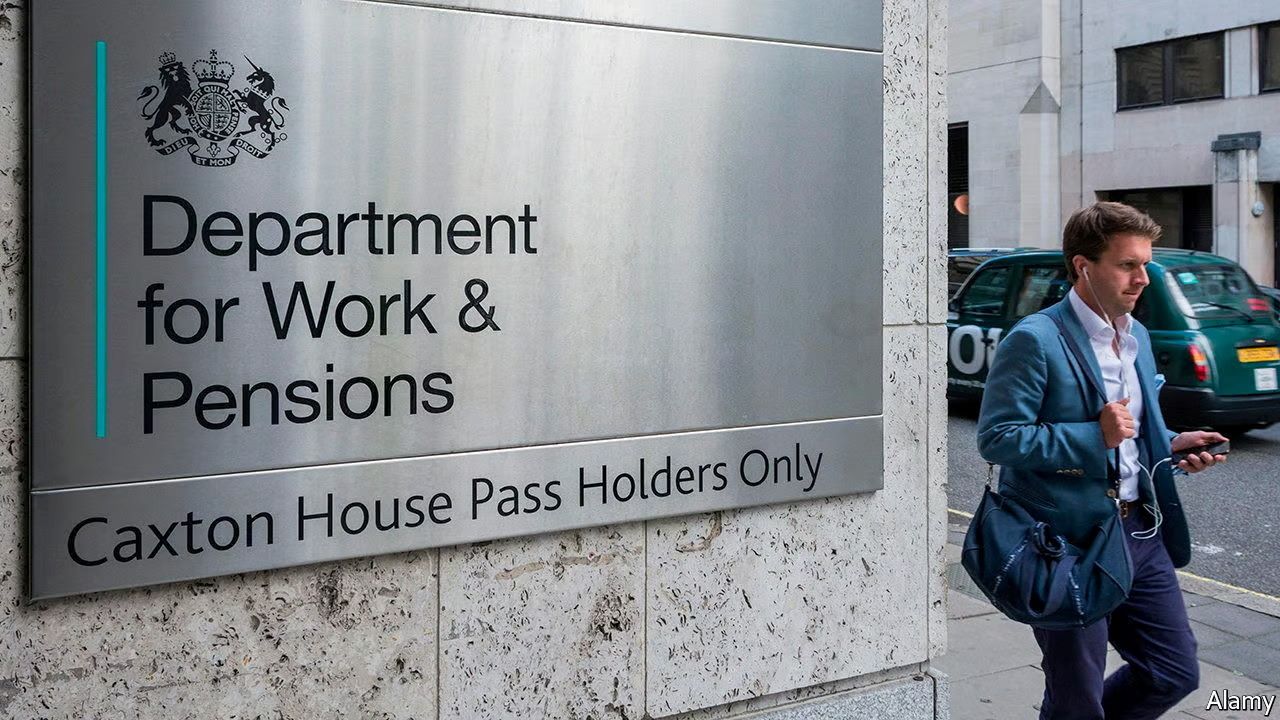

Finance
How Do Government Pension Funds Work?
Published: January 22, 2024
Learn how government pension funds function and their impact on finance. Explore the workings of pension funds and their role in financial management.
(Many of the links in this article redirect to a specific reviewed product. Your purchase of these products through affiliate links helps to generate commission for LiveWell, at no extra cost. Learn more)
Table of Contents
Introduction
Understanding the Role of Government Pension Funds
Government pension funds play a pivotal role in securing the financial future of public sector employees, offering a safety net for retirement. These funds are designed to provide a source of income for individuals who have dedicated their careers to serving the public good. As such, understanding the inner workings of government pension funds is crucial for both employees and the general public. This article delves into the fundamentals of government pension funds, exploring their structure, funding mechanisms, investment strategies, management, and the associated benefits and challenges.
Government pension funds are a cornerstone of public sector employment, serving as a key component of the overall compensation package for government employees. These funds are designed to ensure that individuals who have dedicated their careers to public service are able to retire with financial security and peace of mind. By delving into the intricacies of government pension funds, we can gain a deeper understanding of the mechanisms that underpin retirement security for countless public sector workers.
As we explore the inner workings of government pension funds, it becomes clear that these entities are not only essential for individual retirees but also play a broader role in the stability of the public workforce. By providing a comprehensive overview of government pension funds, we aim to shed light on their significance in shaping the financial well-being of public sector employees and the broader implications for the public sector as a whole.
What Are Government Pension Funds?
Government pension funds, also known as public pension funds, are investment pools that provide retirement income for public sector employees. These funds are established and maintained by government entities, such as federal, state, or local governments, to ensure that employees receive financial support upon retirement. Government pension funds are a form of deferred compensation, whereby a portion of an employee’s earnings is set aside during their working years to fund their retirement.
One of the defining features of government pension funds is their role in providing retirement benefits that are typically guaranteed by the government. This means that retirees can rely on a steady stream of income from these funds, offering a level of financial security during their retirement years. Government pension funds often operate under specific regulations and guidelines, with the aim of safeguarding the long-term sustainability of the fund and the financial well-being of retirees.
These funds are structured to cover a wide range of public sector employees, including civil servants, teachers, law enforcement officers, firefighters, and other government workers. The specific eligibility criteria for participation in a government pension fund may vary based on factors such as length of service, age, and the nature of the employee’s role within the public sector.
Government pension funds are a vital component of the overall compensation package for public sector employees, serving as a key incentive for individuals to pursue careers in government service. By offering retirement benefits, these funds contribute to the financial stability and well-being of public sector workers, thereby playing a crucial role in attracting and retaining talent within government agencies.
Understanding the nature and purpose of government pension funds is essential for employees who are planning for their retirement, as well as for taxpayers who support these funds through government contributions. By delving into the fundamentals of government pension funds, we can gain insight into the mechanisms that underpin retirement security for public sector workers and the broader impact on government operations and fiscal planning.
How Are Government Pension Funds Funded?
Government pension funds are typically funded through a combination of employee contributions, employer contributions, and investment returns. The contributions are set aside and invested to generate the necessary funds to fulfill future pension obligations. Understanding the funding mechanisms of government pension funds is essential for both employees and the general public, as it directly impacts the sustainability and adequacy of retirement benefits.
Employee Contributions: Public sector employees contribute a portion of their earnings towards their pension fund during their working years. These contributions are often deducted from their salaries and are designed to accumulate over time, forming a significant portion of the overall funding for the pension fund. The specific contribution rates may vary based on factors such as salary levels, length of service, and the pension plan’s structure.
Employer Contributions: Government entities, as employers, also make contributions to the pension funds on behalf of their employees. These contributions are part of the overall compensation package provided to public sector workers and are essential for ensuring the financial sustainability of the pension fund. The employer contributions serve to complement the employee contributions, collectively forming the financial foundation of the pension fund.
Investment Returns: In addition to contributions, government pension funds rely on investment returns to grow their assets and meet future pension obligations. The funds are invested in a diversified portfolio of assets, including stocks, bonds, real estate, and other investment vehicles. The generated investment returns contribute significantly to the overall funding of the pension fund, aiming to achieve long-term growth and stability.
The funding of government pension funds is subject to regulatory oversight and actuarial analysis to ensure that the contributions and investment returns align with the fund’s long-term obligations. Proper funding mechanisms are crucial for maintaining the solvency of the pension fund and honoring the commitments made to retirees. Furthermore, transparency and accountability in the funding process are essential for building trust and confidence among employees and the public regarding the sustainability of government pension funds.
How Do Government Pension Funds Invest?
Government pension funds employ a strategic approach to investing their assets, aiming to generate returns that will sustain the fund and meet future pension obligations. The investment strategies of these funds are designed to balance risk and return, considering the long-term nature of their financial commitments to retirees. Understanding how government pension funds invest their assets provides insight into their financial stewardship and the mechanisms that underpin retirement security for public sector employees.
Diversified Portfolio: Government pension funds typically maintain a diversified investment portfolio, allocating their assets across various asset classes to spread risk and capture opportunities for growth. This diversification may include investments in stocks, bonds, real estate, private equity, and other alternative assets. By diversifying their holdings, pension funds aim to achieve a balance between risk and return, ensuring the stability and growth of their assets over time.
Long-Term Focus: Given the long-term nature of their obligations, government pension funds adopt a strategic investment approach that emphasizes long-term growth and sustainability. The investment decisions are guided by the fund’s long-term objectives, taking into account factors such as demographic trends, market conditions, and economic outlook. This forward-looking perspective allows pension funds to navigate short-term market fluctuations while staying focused on their overarching financial goals.
Risk Management: Mitigating investment risk is a critical aspect of how government pension funds invest. While seeking opportunities for growth, pension funds also implement risk management strategies to protect their assets from market volatility and unforeseen events. Risk management may involve diversification, asset allocation, hedging strategies, and rigorous due diligence in selecting investment managers and opportunities.
Professional Management: Government pension funds often rely on professional investment managers and advisors to oversee their investment activities. These professionals bring expertise in asset allocation, portfolio management, and market analysis, enabling the pension fund to make informed investment decisions aligned with their long-term objectives. The selection of investment managers is a crucial aspect of the fund’s investment strategy, as it directly impacts the fund’s performance and risk management.
By adhering to sound investment principles and prudent risk management, government pension funds strive to achieve sustainable investment returns that support the fund’s financial stability and the fulfillment of pension obligations. The investment strategies of these funds are integral to their role in providing retirement security for public sector employees and upholding the long-term sustainability of the pension system.
How Are Government Pension Funds Managed?
The management of government pension funds encompasses a range of activities and oversight mechanisms aimed at ensuring the prudent administration and long-term sustainability of the funds. Effective management is essential for fulfilling the pension obligations to retirees and safeguarding the financial well-being of public sector employees. Understanding the management practices of government pension funds provides insight into the mechanisms that underpin their operational integrity and fiduciary responsibility.
Board Governance: Government pension funds are typically overseen by a board of trustees or directors responsible for setting investment policies, overseeing fund operations, and ensuring compliance with regulatory requirements. The board governance structure is designed to provide strategic direction, risk oversight, and fiduciary stewardship, with a focus on acting in the best interests of the fund’s beneficiaries.
Investment Oversight: The management of government pension funds involves rigorous oversight of investment activities, including asset allocation, manager selection, and performance evaluation. Investment committees or professional investment staff are tasked with implementing the fund’s investment strategy, monitoring market conditions, and assessing the performance of investment managers to ensure alignment with the fund’s objectives.
Actuarial Analysis: Actuarial analysis plays a crucial role in managing government pension funds, providing insights into the fund’s financial health, funding requirements, and long-term sustainability. Actuaries assess demographic trends, investment returns, and benefit obligations to inform funding policies, contribution rates, and the adequacy of pension reserves. This analysis helps guide decision-making to maintain the fund’s solvency and meet future pension obligations.
Transparency and Accountability: Effective management of government pension funds emphasizes transparency and accountability to stakeholders, including plan participants, taxpayers, and regulatory authorities. Clear and comprehensive reporting on fund performance, financial status, and governance practices fosters trust and confidence in the management of pension assets and the fulfillment of pension commitments.
Regulatory Compliance: Government pension funds are subject to regulatory oversight and compliance requirements aimed at safeguarding the interests of plan participants and ensuring the soundness of the pension system. Compliance with regulatory standards, reporting obligations, and fiduciary responsibilities is integral to the effective management of pension funds and the protection of retirement benefits.
By upholding strong governance practices, prudent investment oversight, actuarial analysis, transparency, and regulatory compliance, the management of government pension funds aims to uphold the fiduciary duty to plan participants and secure the long-term sustainability of the pension system. These management practices are essential for preserving the integrity of pension assets and fulfilling the retirement security needs of public sector employees.
What Are the Benefits and Challenges of Government Pension Funds?
Government pension funds offer a range of benefits to public sector employees and contribute to the overall stability of the retirement system. However, they also face challenges that require careful management and strategic planning. Understanding the benefits and challenges associated with government pension funds provides insight into their impact on retirement security and the broader fiscal landscape.
Benefits:
- Retirement Security: Government pension funds provide public sector employees with a reliable source of retirement income, offering financial security and stability during their post-employment years.
- Attracting Talent: Pension benefits serve as a valuable incentive for individuals considering careers in public service, helping government agencies attract and retain skilled and dedicated employees.
- Stimulating the Economy: Pension funds contribute to economic growth by investing in a diverse range of assets, including infrastructure projects, real estate developments, and businesses, thereby supporting job creation and economic development.
- Long-Term Planning: By promoting long-term financial planning and stability, government pension funds help individuals prepare for retirement and reduce the burden on social welfare programs.
- Employee Well-Being: The availability of pension benefits enhances the overall well-being of public sector workers, reducing financial stress and promoting a sense of financial security throughout their careers and into retirement.
Challenges:
- Funding Volatility: Fluctuations in financial markets and economic conditions can impact the funding levels of pension funds, requiring proactive management to address funding gaps and ensure long-term sustainability.
- Demographic Shifts: Changing demographics, including an aging workforce and longer life expectancies, pose challenges for pension funds in meeting the evolving needs of retirees while maintaining funding adequacy.
- Investment Risk: Pension funds face the challenge of balancing the pursuit of investment returns with managing investment risk, especially in periods of market volatility and uncertainty.
- Regulatory Compliance: Adhering to evolving regulatory requirements and accounting standards necessitates ongoing diligence and adaptability to ensure compliance while fulfilling pension obligations.
- Public Perception: Public scrutiny and perception of pension fund management and sustainability can influence stakeholder confidence and support, underscoring the importance of transparency and effective communication.
Addressing these challenges while maximizing the benefits of government pension funds requires a multifaceted approach that integrates sound financial management, risk mitigation strategies, stakeholder engagement, and a focus on long-term sustainability. By navigating these dynamics, government pension funds can continue to fulfill their vital role in providing retirement security for public sector employees and contributing to the broader economic and social well-being.
Conclusion
Government pension funds stand as pillars of financial security for public sector employees, offering a reliable source of retirement income and serving as a cornerstone of public sector compensation. The intricate mechanisms that underpin these funds, from funding and investment strategies to management and oversight, play a pivotal role in shaping the retirement landscape for countless individuals dedicated to public service.
As we delve into the world of government pension funds, it becomes evident that these entities not only provide retirement security but also contribute to broader economic growth and stability. By investing in a diverse array of assets, pension funds stimulate economic development, support infrastructure projects, and foster job creation, thereby enriching the communities they serve.
However, the management of government pension funds is not without its challenges. From funding volatility and investment risk to demographic shifts and regulatory compliance, pension funds must navigate a complex landscape to ensure the long-term sustainability of retirement benefits. Addressing these challenges demands strategic foresight, prudent risk management, and a commitment to transparency and accountability.
Looking ahead, the continued success of government pension funds hinges on their ability to adapt to evolving market conditions, demographic trends, and regulatory requirements. By embracing innovation in investment strategies, leveraging actuarial insights, and upholding governance best practices, pension funds can fortify their role as guardians of retirement security and stewards of public sector talent.
Ultimately, government pension funds embody a commitment to the well-being of public sector employees, the resilience of the retirement system, and the prosperity of the communities they serve. By navigating the benefits and challenges inherent in pension fund management, these entities uphold their mission to provide financial peace of mind for retirees and foster a robust foundation for the future of public service.














